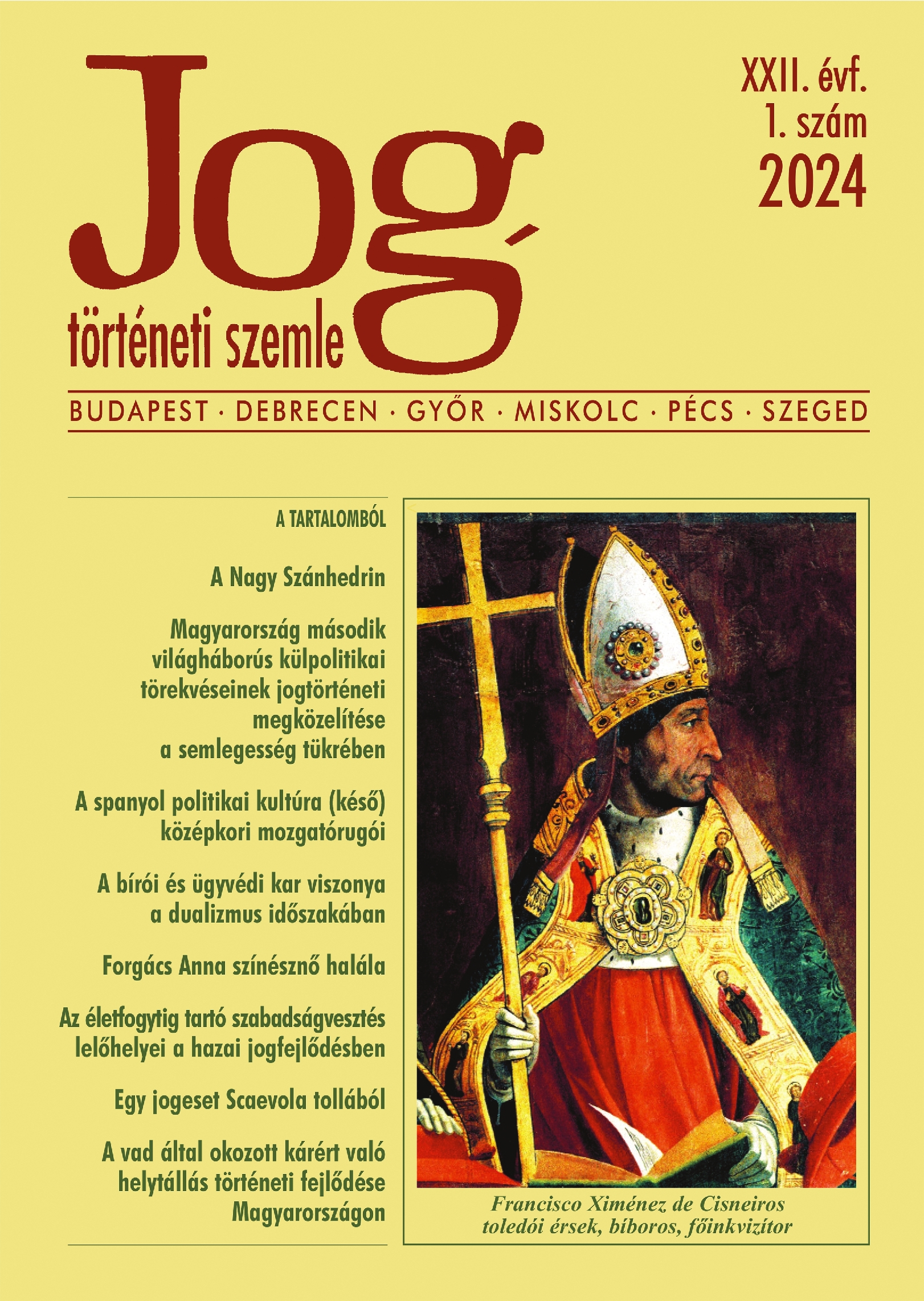Milestones
Sources of life imprisonment in the Hungarian legal history from the Bencsik proposal to the draft Criminal Code of 1795
DOI:
https://doi.org/10.55051/JTSZ2024-1p50Abstract
Life imprisonment occurs in a mixed way in the history of Hungarian law and codification. This means that the assessment of the sanction has been constantly changing since its first appearance at the legislative level (1435, 1492), through the major codification works of the 18th and 19th centuries and up to the present day: some proposals and codes knew it and regulated it in details, while others did not; the form of the sanction, the necessity of the punishment were therefore viewed differently from time to time. The punishment took its place very slowly in the system of sanctions. All of this may also be attributed to the fact that the prison was used primarily for other pre-trial detention purposes, and then it also played a role of corporal punishment, so it was not considered necessary to be imprisoned for a period longer than a few years. The present study aims to present a chronological presentation of life imprisonment from the Bencsik proposal (1712) to the draft Criminal Code of 1795.






